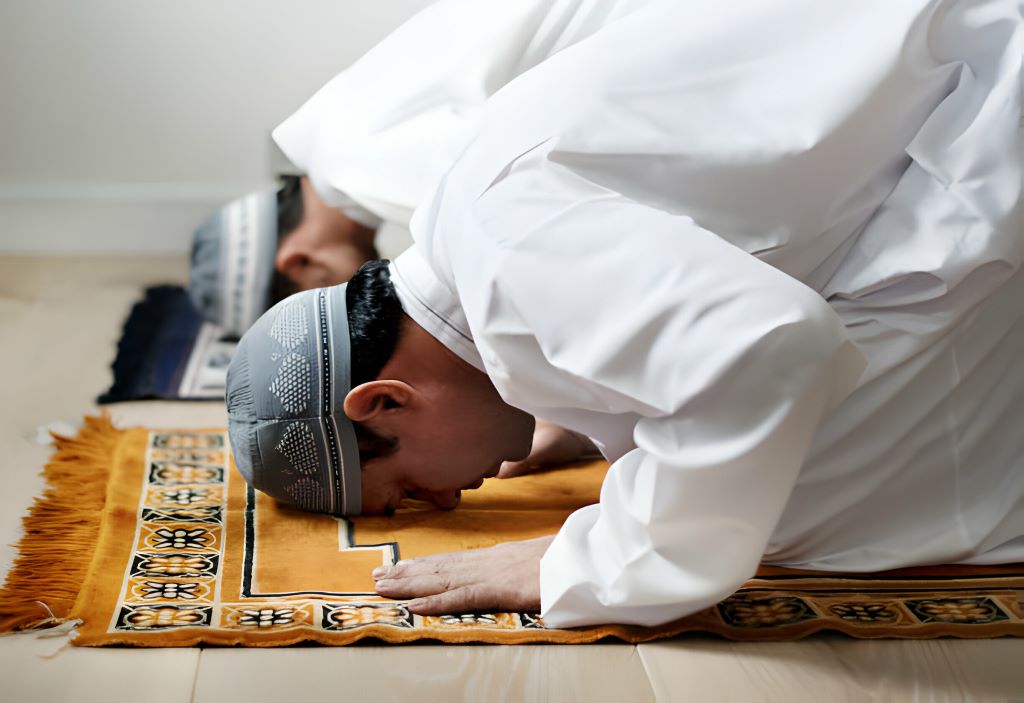Prayer is an integral aspect of many religious and spiritual practices around the world. It serves as a means of connection, reflection, and devotion for millions of individuals. One of the fundamental elements associated with prayer in various cultures is the use of prayer mats. These mats hold deep symbolic significance and play a crucial role in the prayer rituals of numerous faith traditions.
Origins and History
The tradition of using prayer mats dates back centuries and is rooted in the rich tapestry of religious and cultural practices. While the specifics vary across different regions and religions, the concept of using a designated mat for prayer is widespread.
Islamic Tradition
In Islam, the use of prayer mats, known as “sajjadah” or “musallah,” is deeply ingrained in the prayer ritual. The Prophet Muhammad himself emphasized the importance of cleanliness and a designated place for prayer, which laid the foundation for the use of prayer mats among Muslims. These mats typically feature intricate designs and are placed on the ground to provide a clean and comfortable surface for prayer.
Eastern Traditions
Similarly, in Eastern traditions such as Hinduism and Buddhism, prayer mats hold significant cultural and religious importance. In Hinduism, mats or rugs are used during meditation and prayer practices, providing a sacred space for devotees to connect with the divine.
In Buddhism, meditation mats serve as a symbol of mindfulness and tranquility, creating a conducive environment for spiritual reflection and inner peace.
Symbolism and Design
Prayer mats are more than just functional items; they are imbued with symbolism and meaning that resonate deeply with believers. The intricate patterns and designs found on prayer mats often reflect the cultural and spiritual heritage of the communities that use them. In Islamic tradition, the mihrab, or niche, on the prayer mat signifies the direction of prayer towards the Kaaba in Mecca, symbolizing unity and devotion to Allah.
These mats may feature geometric patterns, floral motifs, or verses from sacred texts, each element carrying profound spiritual significance. The act of unfurling the prayer mat and positioning oneself for prayer becomes a ritualistic journey, steeped in symbolism and reverence, fostering a deeper connection with the divine presence. Through their design, prayer mats encapsulate the essence of faith, tradition, and spiritual contemplation, serving as tangible reminders of the enduring power of prayer in the lives of believers.
Directionality
In Islam, prayer mats often feature a niche, known as the “mihrab,” which indicates the direction of the Kaaba in Mecca, towards which Muslims direct their prayers five times a day. This symbolizes the unity and universality of the Muslim community, regardless of geographical location.
Ornate Patterns
The intricate designs and patterns found on prayer mats are not merely decorative but hold symbolic significance as well. These motifs often draw inspiration from Islamic geometry, calligraphy, and nature, reflecting the beauty and complexity of the divine creation. Each element of the design may carry spiritual symbolism, fostering a deeper connection with the divine during prayer.
Sacred Space
Prayer mats serve as a physical manifestation of sacred space, creating a delineated area for prayer and meditation. By designating a specific space for spiritual practice, individuals are reminded of the importance of mindfulness and devotion in their daily lives.
Practical Considerations
Beyond their symbolic significance, prayer mats also offer practical benefits that enhance the prayer experience. The designated space provided by prayer mats helps create a conducive environment for focused prayer and meditation.
By delineating a specific area for worship, prayer mats help minimize distractions and allow individuals to center their thoughts and intentions towards the divine. The ritual of unrolling the mat and positioning oneself for prayer serves as a mindful transition into a sacred state of being, enhancing the depth and sincerity of the prayer experience. Using a prayer mat underscores the importance of reverence and respect for the act of prayer itself.
By designating a clean and consecrated space for worship, individuals demonstrate their reverence for the sacred and their commitment to engaging with the divine in a dignified manner. The act of unrolling the prayer mat and performing ablutions before prayer serves as a tangible expression of humility and devotion, fostering a sense of spiritual humility and awe in the presence of the divine.
Comfort and Support
The soft and cushioned surface of prayer mats provides comfort and support during prolonged periods of prayer and meditation. The tactile sensation of the mat beneath one’s feet serves as a grounding force, facilitating a deeper sense of focus and concentration.
Hygiene and Cleanliness
In many cultures, cleanliness is paramount in religious practices, and prayer mats help maintain a clean and purified environment for prayer. By providing a barrier between the worshiper and the ground, prayer mats prevent direct contact with impurities and ensure a hygienic surface for prayer.
Portability and Accessibility
Prayer mats are designed to be lightweight and portable, allowing individuals to carry them wherever they go. Whether at home, in the mosque, or while traveling, having a prayer mat readily available ensures that believers can engage in prayer and meditation wherever they may be.
Conclusion
Prayer mats serve as powerful symbols of devotion, tradition, and cultural heritage across diverse religious and spiritual traditions. From the intricate designs that adorn their surface to the comfort and support they provide during prayer, these mats play a central role in the prayer rituals of millions around the world. Beyond their practical utility, prayer mats serve as a tangible reminder of the importance of spiritual connection and mindfulness in our lives, bridging the gap between the physical and the divine. As we bow our heads in prayer upon these sacred mats, we are reminded of the universal human longing for transcendence and the enduring power of faith and devotion.


